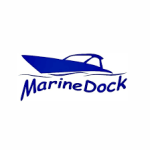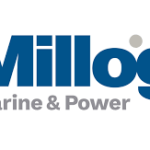Environmentally friendly industrial cleaning
Photo and video gallery
Here is a collection of information, pictures and videos showing how effectively different materials and surfaces are cleaned by laser technique.
- Laser Cleaning is usually preferred on projects where it is simply impossible, or undesired to use traditional methods like grit blasting, grinding, or chemical wet cleaning.
- Our customers are investing in sustainability and are putting value on a clean and tidy work environment, safety at work, simultaneously as they are appreciating a minimal impact on health and environment.
- We are working for example in the food industry where it is not suitable to add either chemicals or blasting material like sand, grit, soda. The same priorities are valid for spaces with sensitive / technical equipment like electronics and moving mechanics. Other typical application areas are stainless steel surfaces for example in industrial kitchens and spas / baths where it is possible to clean tiles by laser too.
During the summer season Laser Cleaning is an excellent method to remove graffiti from many different types of hard surfaces like stone, bricks, concrete, steel, etc.
- Laser Cleaning becomes efficient because there is less need for pre- and post-cleaning works, like to protect the surroundings from pollution, and a minimal clean-up is required after Laser Cleaning is accomplished compared to other options. In addition to these time saving factors, we are adding capacity to our customers too because often at least one employee is made redundant who normally would have done the cleaning by other, traditional means.
- Because of the brightness of the laser light, a five metres safety distance from the surface to be cleaned is required. This is arranged by cordoning off the working area for unauthorized individuals. Simultaneously Laser Cleaning is boosting safety at work sites and reducing the environmental impact.
- This is possible because:
- The laser does not make any direct mechanical contact with the surface to be cleaned.
- The laser does not add any polluting/contaminating materials to the environment.
- Laser Cleaning is a non-pressurized, vibration-free method that makes minimal noise.
- Thanks to these unique characteristics, it is possible to remove several risks which could lead to health issues, but also create conflicts with other tasks being executed in the area. Laser Cleaning is also removing risks connected to rotating tools / equipment. All these factors are contributing to improved sustainability.
The optics in the Laser Cleaning unit requires a surrounding temperature above the freezing point, as well as a dry surface to be cleaned to perform at its best. A 230 VAC energy source is required to run the Laser Cleaning unit, and the operator must wear appropriate safety glasses because of the brightness of the Laser light.
There are different types of Laser Cleaning sources with different characteristics. The equipment we are using works best on non-organic, hard surfaces or materials, but is also used to restore softer materials like wood, plastic, rubber etc.
We have also received queries like «is it possible to remove tattoos» by our Laser, but it is not. Other materials where our equipment is not working optimally are carbon fibre, raw glass fibre (gel-coat surfaces works well though), and textiles.





